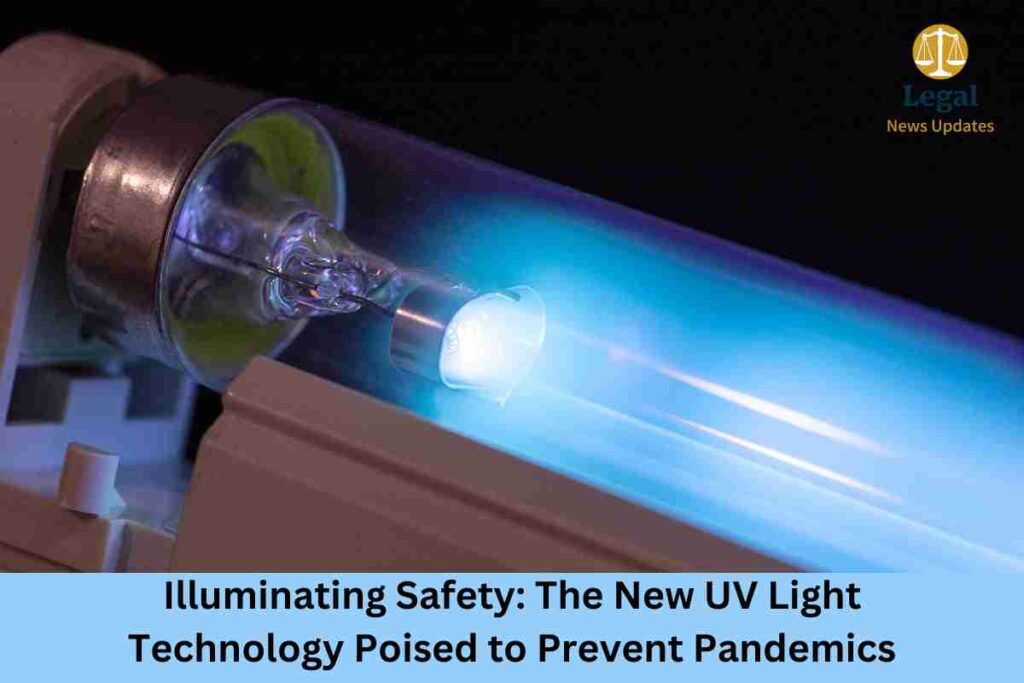Illuminating Safety: The New UV Light Technology Poised to Prevent Pandemics
Martha Hammack April 30, 2024 0
In a world increasingly wary of pandemic threats, innovative technologies that can prevent the spread of viruses are more crucial than ever. A new type of UV light, recently explored by scientists, holds the promise of being a game-changer in the fight against infectious diseases. This comprehensive article delves into the technology, its potential applications, and the scientific community’s response.
New Type of UV Light Could Help Reduce Risk of the Next Pandemic
The Science Behind UV Light and Virus Neutralization
UV light has long been recognized for its disinfectant properties. The new technology harnesses specific wavelengths that are safe for humans but lethal to pathogens. How does this UV light differ from traditional methods, and what makes it particularly effective against viruses?
Understanding Wavelengths: The Key to Safety and Efficacy
Traditional UV light used for disinfection primarily utilizes UV-C light, which can be harmful to human skin and eyes. The new UV technology employs a different spectrum, which is equally effective against viruses but does not pose a risk to human health. What are these safe wavelengths, and how were they discovered?
Comparison with Traditional Disinfectants
While chemical disinfectants and traditional UV light systems are effective, they often come with environmental and health hazards. The new UV light offers a non-toxic alternative. How does its efficacy compare to that of chemical methods in real-world settings?
Potential Applications in Public and Private Spaces
The versatility of this UV technology allows for its use in various environments—ranging from hospitals to public transportation. What are the potential benefits and limitations of deploying this technology in such diverse settings?
Hospitals and Healthcare Facilities
In healthcare settings, preventing the spread of pathogens is paramount. How can this new UV light be integrated into existing infection control protocols?
Public Transportation Systems
Public transport systems are high-risk environments for the spread of infectious diseases. Can UV light be effectively and safely used in buses, trains, and stations?
The Economic Impact of UV Light Technology
Investing in preventive technologies can save costs associated with healthcare and economic disruptions during pandemics. What are the projected economic benefits of widespread adoption of this UV technology?
Cost Analysis of Implementation
What are the initial and ongoing costs associated with deploying UV light technology? How do these costs compare to the savings from preventing disease outbreaks?
Long-term Savings and Benefits
Beyond the immediate prevention of infection, what are the long-term economic benefits of this technology for businesses and governments?
Global Reach and Accessibility
For a technology to be effective in pandemic prevention, it must be globally accessible. What are the challenges and solutions associated with making this UV technology available worldwide?
Production and Distribution Challenges
What are the manufacturing requirements for this UV technology, and how can it be distributed globally to ensure it reaches the areas most in need?
Regulatory and Safety Considerations
What regulatory approvals are required for this type of technology, and how can it be standardized across different countries?
Scientific and Community Response to the New UV Light
How has the scientific community reacted to the development of this new UV light? What are the endorsements or criticisms it has received?
Expert Opinions and Analysis
What do leading experts in virology and public health say about the potential of this UV light to prevent future pandemics?
Public Perception and Acceptance
How has the general public responded to the introduction of this new technology? Are there concerns about its safety or efficacy?
Conclusion
The development of a new type of UV light that can safely neutralize pathogens presents a significant advancement in our ability to prevent future pandemics. While challenges remain, the potential benefits of this technology could be transformative, not only for public health but also for the global economy.
FAQs About UV Light and Pandemic Prevention
- What is UV light and how does it kill viruses? UV light destroys the DNA or RNA of viruses, rendering them incapable of reproducing and causing infection.
- Is the new type of UV light safe for human exposure? Yes, the wavelengths used in the new UV technology are safe for humans, posing no risk to skin or eyes.
- Can this UV technology be used in homes? While primarily targeted for public and healthcare settings, future adaptations may allow safe home use.
- How quickly can UV light neutralize pathogens in the air? The new UV technology can neutralize pathogens almost instantaneously as air circulates through the system.
- Are there any environmental impacts of using UV light for disinfection? Unlike chemical disinfectants, UV light does not leave harmful residues, making it an environmentally friendly option.
- How does UV light compare to vaccines in pandemic prevention? While vaccines are crucial for building immunity, UV light provides an additional layer of protection by reducing the spread of viruses in public spaces.
This in-depth exploration not only highlights the innovative strides being made in technology but also underlines our ongoing commitment to safeguarding global health through scientific advancement.







